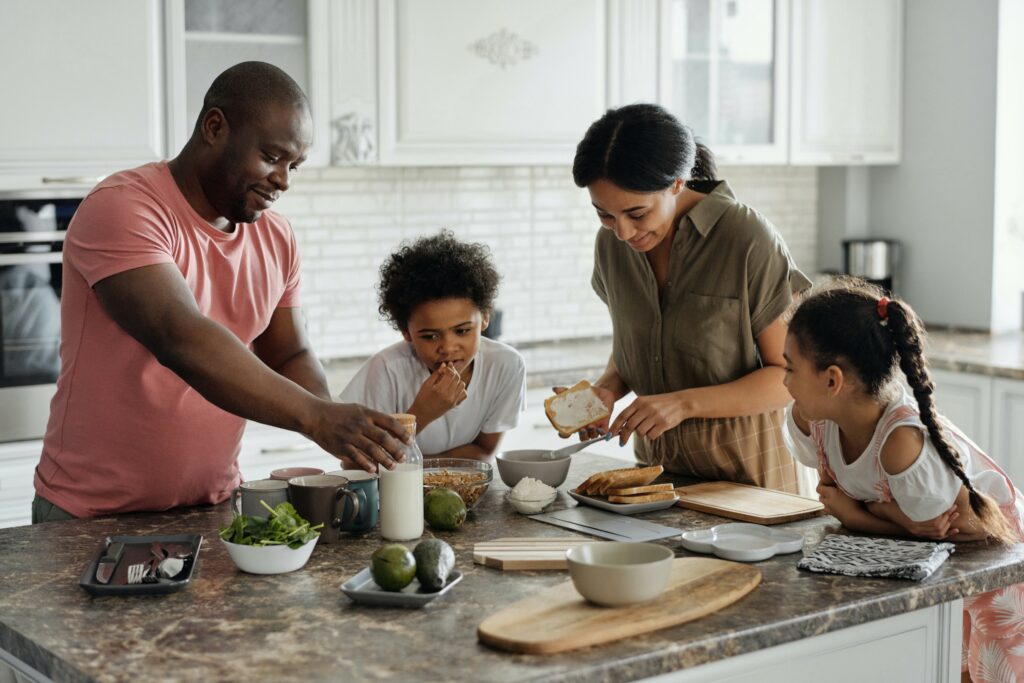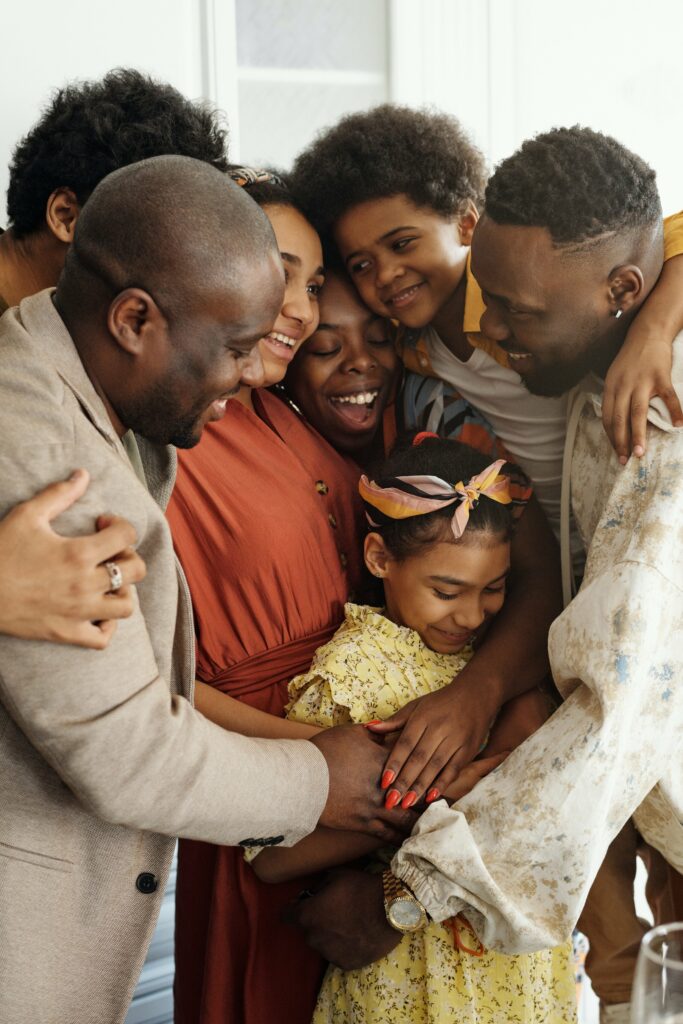The schoolyard and growing pains
Last time on Raising Resilient Kids…
We talked about ways to help the toddlers and pre-school age kids in your life develop social-emotional skills to help them thrive in life. Today we’re talking about school-age kids. They’re older, they’re starting to seek more independence in their daily tasks, and they know more about the world and its preferences. Kids these ages are often beginning to make friends at school and might even start having schoolyard crushes. They have greater responsibility in the world with more likelihood of homework, chores, care of pets, and other routine obligations. Their world is expanding and also becoming more demanding. This can be stressful for a young person who is still learning, growing, and developing their ability to identify and process their emotions.
So how can you support them as they learn? There are many ways, and you may find it a learning process for yourself as well! Many of us have neglected our emotional processing for various reasons, whether it be time constraints, trauma, trouble sitting with discomfort, or something else entirely. Developing these skills and tools alongside the children in your life (or simply for yourself!) can be an enriching experience.

5-10
Kids in this age range are often torn between places where they want more independence and skillsets that they may not be ready for yet. So it’s a great time to focus on helping them develop the social and emotional skills they need to respond to that internal conflict, especially since most are in a school setting by this point and are engaging with a more significant number of kids in a more open environment than they have previously.
Emotional regulation consists of a few parts – impulse control, emotional recognition, emotional processing, and communication skills, which overlap significantly with interpersonal skills. These, in turn, can be impacted by a variety of other factors, including a variety of mental health experiences and stress. The first – and often hardest – step is constantly helping the child in your life identify coping strategies to help them take the mental and emotional space from their emotions to identify them in the first place. Things like breathing exercises, having some tea or a cold drink of water, having a cozy place to take physical space from what is bothering them, or listening to music can be helpful. This is one of the tasks of impulse control. You are learning how to find tools that help you realize that you are experiencing a strong emotion and creating mental and temporal space between the emotions and whatever actions you might take next. Ideally, emotional identification and processing should occur within that space, so the action that comes after is a calmer and more effective form of communication.
Emotional identification can be tricky, especially for those who have additional barriers to it, but there are a lot of tools that can help! Body checks that help kids identify the common physical signs of specific emotions (e.g., stomach aches for anxiety, clenched hands for anger, smiles for happiness) are options. Other activities include having kids draw their own representations of their emotions out and then “check in” with themselves regularly throughout the day to learn to recognize those emotions within themselves. For the technologically inclined, many mental health and self-care apps include mood checks and are kid-friendly. Once a child has completed steps one and two, they’re ready to process what it means that they are feeling a particular emotion. This might be done through journaling, artistic expression, or maybe just talking it out with their stuffed animals, friends, or trusted adults. As long as the child has the chance to get their thoughts in order and ready for a larger conversation or can reach a point where they realize what the feelings mean for them going forward, that’s the most crucial piece.

Communication comes last of all. We often hear about “I” statements in communication, and those can be helpful. They are framing things in terms of how they made someone feel instead of what another did can avoid the sense of accusation. Another option is to use a tool out of Dialectical Behavioral Therapy known as D.E.A.R.M.A.N., which goes beyond the use of “I” statements. The acronym stands for “Describe,” “Explain,” “Assert,” “Reinforce,” “Mindfulness,” “Appear Confident,” and “Negotiate.” The idea is essentially to lay out specific details of the situation that were relevant to you using “I” statements to explain why they mattered, plan for positive reinforcement of a particular boundary, and use mindfulness during the conversation to remain calm and confident and to understand where your minimum boundary, comfortable boundary and ideal boundary lie in advance so that you can compromise effectively during the conversation.
There are many different ways to support kids in navigating their increasing independence as they grow up, and one of the biggest is simply to support them in trying new things that they may not always succeed in. Teaching kids to navigate failure successfully and emotionally regulate in the face of it is a critical skill for adulthood and will serve them well as they explore new friendships. Part of this may mean letting them try new things that you aren’t sure they’re ready for, like trying out for the soccer team when they’ve never played in their life. Then, after tryouts, comfort them for a while before talking to them about a practice schedule leading up to next year’s tryouts. In other cases, it may mean letting them make their case for a new thing and then gently explaining to them why, even though they made a good case, there are specific reasons why you won’t be letting them get that tattoo of their favorite rockstar’s birthday on their arm just yet, then go ahead and explain those reasons. Then support them in using their coping mechanisms in managing their response to not convincing you to side with them on that decision.
The other vital conversation to have with kids in this age range is body changes. Sure, they aren’t going through puberty yet. And at the early end of this range, you may not have to. But as they get closer to the end of it, kids of this age range will hear about puberty from someone, and you want it to be from a trusted adult, not a kid in the schoolyard or on the internet. Puberty can be scary for kids if the first things they hear about it are only after it has started happening. It’s important to remember that the average age for kids to hit puberty is 12, meaning that some begin it earlier than that. Talking with the kids in your life about puberty and the changes that can happen in their bodies because of it before they start can make a big difference for them. Conversing about body hair, menstruation, growth spurts, vocal registers, and other bodily changes can save them a lot of shame and embarrassment.
The key takeaways at this age are to make sure that you maintain the relationship of open communication that you hopefully started building when they were younger or to start building it now if that didn’t work out. Strong relationships with trusted adults can be critical to helping kids navigate challenges with school bullying, build emotional regulation, develop their social skills, succeed academically or navigate school resources if they start to struggle. In addition, being able to model emotional availability for the kid in your life will help them be emotionally open when the time comes that they need to know how to be that way too.

The A, B, C’s of Modeling Emotional Regulation
Kids will do as we do, not as we say. That’s why it’s essential to have our own house in order as best we can and to acknowledge when we miss the mark. It’s a common idea that kids will lose respect for adults who apologize to them, but there’s no evidence of this. Instead, consider the values we teach the kids in our lives when we can genuinely own up to the things we wish we had handled better. That to make mistakes is human. They can usually be recovered with introspection, care, and the rebuilding of trust. That “doing badly” and “being bad” are not equivalent, and the disappointments they encounter in life do not have to define them. Giving them clear examples of how to do those things effectively can make it less daunting to make a genuine attempt themselves when the time comes.
Similarly, modeling good self-care and emotional regulation skills can be an enormous help to kids who are still learning how to perform them independently. Sometimes, practicing skills together with the kids in our lives, aka co-regulating can be a great bonding experience and a powerful tool for supporting kids in strengthening their independent self-soothing and emotional processing skills. Of course, they’ll have to self-regulate independently eventually, but it can make a big difference when they have our guidance in the early years.
Looking for more information about how parents can keep kids safe? Check out our page for parents.
Start the discussion at forum.prostasia.org